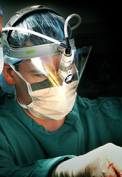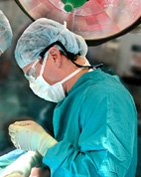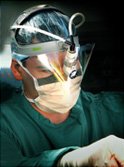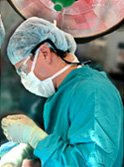Cuff Tear Arthropathy
Normal Shoulder

In the normal shoulder (glenohumeral joint), motion occurs across smooth surfaces lined with cartilage. As seen on the X-ray to the right, the normal shoulder has smooth surfaces lined with cartilage that cushions the impact between the bones and provides a smooth gliding surface for movement.
The rotator cuff is needed for normal shoulder function. The rotator cuff consists of four muscles that become tendons as they attach to the shoulder. A key function of the rotator cuff is to stabilize the shoulder by pulling the ball (humeral head) into the socket (glenoid).
Rotator Cuff Arthropathy
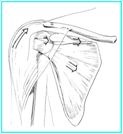
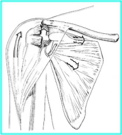
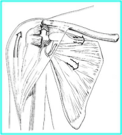
In some shoulders with massive rotator cuff tears, the stability of the shoulder is lost. Powered by the deltoid muscle, the humeral head begins to migrate upwards. Normal motion is lost. Patients can often feel the humeral head dislocating above the shoulder. Shoulder arthritis may develop, and is often present in this setting.
Symptoms
Patients with Cuff Tear Arthropathy experience pain that gets worse with time, increases with activity, and interferes with sleep. Range of motion decreases, and atrophy (wasting) of the muscles around the shoulder worsens. The shoulder typically feels weak. It may swell, click, pop, and crunch. There may be tenderness to touch. It may dislocate during attempts to lift the arm. Activities of daily living begin to become affected, as patients have difficulty with dressing, grooming, bathing, and even eating.
Non-Operative Treatment
Typically, non-operative treatments are used initially, including activity modification, anti-inflammatory medication, cortisone injections, and sometimes physical therapy. The goal of physical therapy is to attempt to maintain range of motion. Strengthening exercise can be painful.
Operative Treatment
Patients with rotator cuff tears and shoulder arthritis have two surgical options: arthroscopic treatment or shoulder replacement.
Arthroscopic surgery does not reverse the arthritic process, but often has the ability to provide pain relief for a period of time. In certain cases, the rotator cuff tear may be repaired or partially repaired in attempt to regain function of the shoulder.


Shoulder replacement surgery is the most reliable surgery for improving pain and return of function for the patient with rotator cuff arthropathy. Recent technological advancements have revolutionized the treatment of cuff tear arthropathy. The Reverse Shoulder Replacement is now available in the United States and is an excellent option for patients with cuff tear arthropathy.

